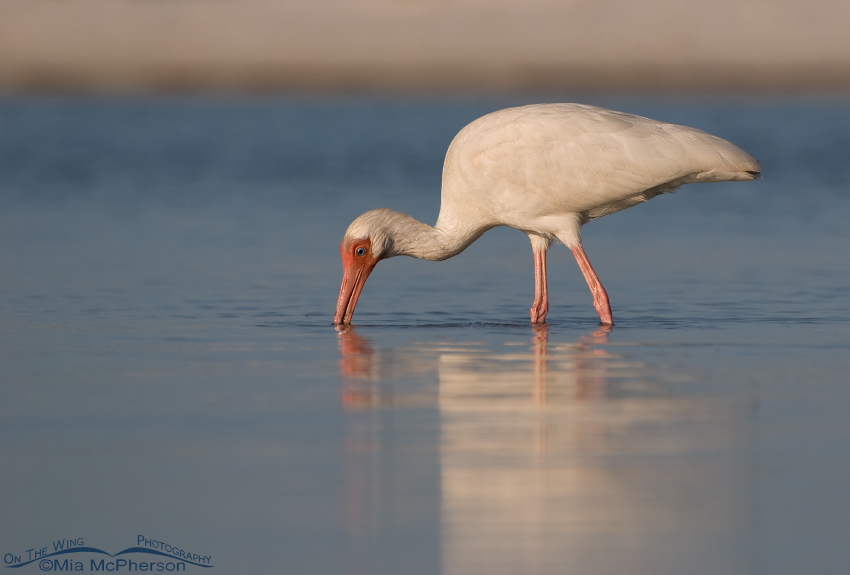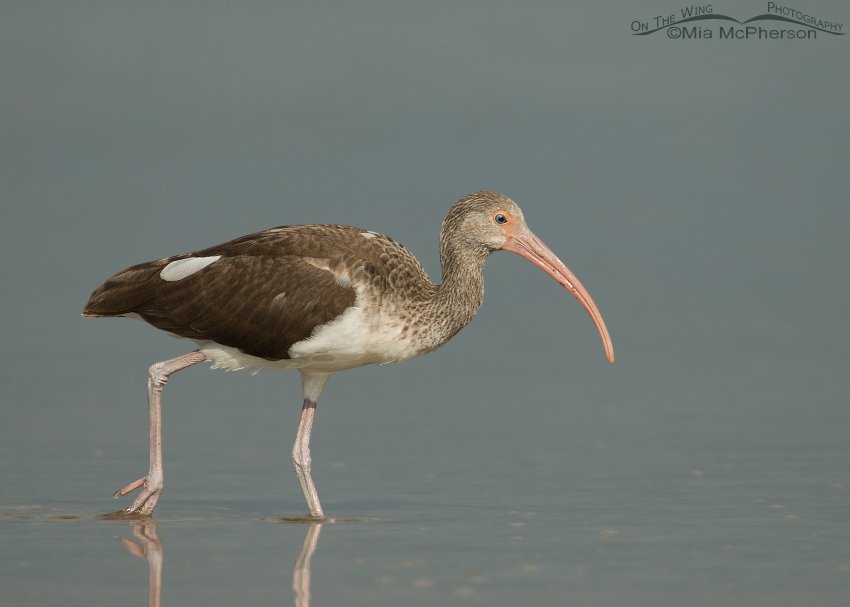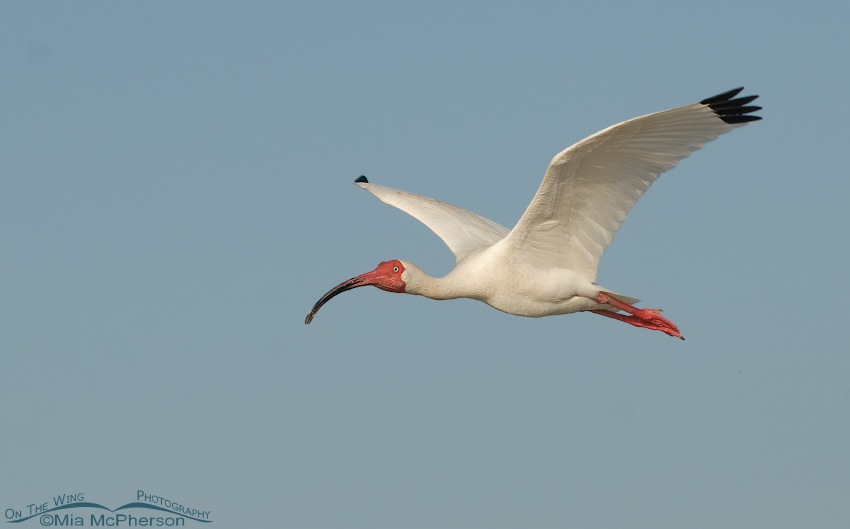In Florida White Ibis are a fairly common wading bird. They are also seen along the coast of the Gulf of Mexico, the Atlantic cost as far north as the Carolinas, Mexico and the Caribbean as well as northern sections of South America. They are highly gregarious, they fly, roost, and feed together.
 Adult White Ibis feeding in a tidal lagoon – Nikon D200, handheld, f6.3, 1/1000, ISO 160, Nikkor 70-300mm VR at 300mm, natural light
Adult White Ibis feeding in a tidal lagoon – Nikon D200, handheld, f6.3, 1/1000, ISO 160, Nikkor 70-300mm VR at 300mm, natural light
A friend of mine considers them one of the “Big White Birds” (BWB). They are easy to photograph in flight and on land because they aren’t very fast moving.
Adult White Ibis have long, pink legs, bills and faces with sky blue eyes. Their plumage is all white with the exception of tiny black wing tips. Their long, curved bill is used to probe mud for prey.
 Juvenile White Ibis in a tidal lagoon – Nikon D200, handheld, F6.3, 1/1000, ISO 200, Nikkor 80-400mm at 400mm, natural light
Juvenile White Ibis in a tidal lagoon – Nikon D200, handheld, F6.3, 1/1000, ISO 200, Nikkor 80-400mm at 400mm, natural light
Juvenile White Ibis are shaped much the same as the adults but have mottled feathers in shades of brown and white. More white feathers begin to show on the back of the juveniles starting in December and by their first summer they will have more white than brown feathers.
 Breeding plumage White Ibis in flight – Nikon D200, handheld, f6.3, 1/1500, ISO 320, Nikkor 70-300mm VR at 140mm, natural light
Breeding plumage White Ibis in flight – Nikon D200, handheld, f6.3, 1/1500, ISO 320, Nikkor 70-300mm VR at 140mm, natural light
In breeding season the adults plumage is the same but their legs, bill and face turn red. The ibis in the image above has dark mud on its bill which has covered some of the red.
I used to call White Ibises “Lawn chickens” when I lived in Florida because at times a whole flock would descend on my yard to eat bugs in the grass and garden. It was a scene that was not uncommon to see but it was always very amusing.
Life is good.
Mia
Click here to see more of my White Ibis photos plus facts and information about this species.


These are interesting-looking birds. I especially like the juvenile’s coloring. I will be in Panama City next week. Maybe I will see some if I can find a tidal lagoon?
Julie, you may see them in Panama City if you can find a tidal lagoon, also look in fields near water. They eat bugs too!